The Wyckoff Principle
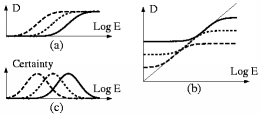
- The Wyckoff principle is based on the fact that differently exposed images
of the same scene or object capture different information due to the
differences in exposure.
Consider, for example, these four images of the same scene: an open
doorway leading off into a long dark corridor
(captured with
a
Personal Imaging camera, but the Wyckoff principle applies to
equally well to ordinary hand-held 35mm cameras, HandyCams, etc.).
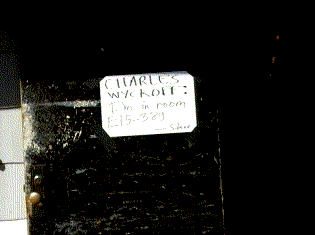
The above image shows the open doorway, upon which there is direct
sunlight shining. Since I am looking at the white sign on the door,
my camera has adjusted itself to expose this nicely. The
door and wall are visible, but the inside of the corridor to the
right is dark.

As I look to the right, the camera's automatic exposure
brightens up the image so that now I can no longer read the sign.
However, it's still not
bright enough for me to see down into the dark hallway.
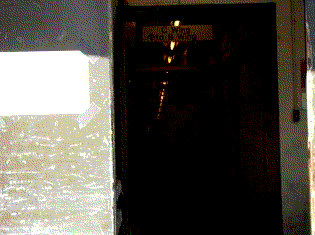
Now as I turn my head further to the right, I can begin to see
just a little of the hallway.
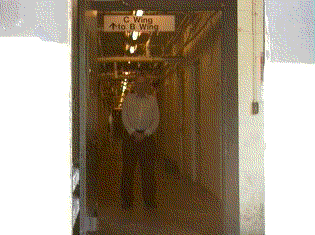
As I look straight down the hallway, my camera's gain increases
to properly expose what's in the center of it's field of view.
I can see a person standing in the hallway (Charles Wyckoff,
inventor of XR film). However, the dark brown
door to the left
apears as completely white --- so white in fact, that we can no
longer tell that it is a door.
The entire dataset from this looking around
is available to other researchers
for illustrating/testing the Wyckoff principle
-
Another similar dataset is also available.
Here is a
lookpainting
generated, using the Wyckoff principle,
from that dataset.
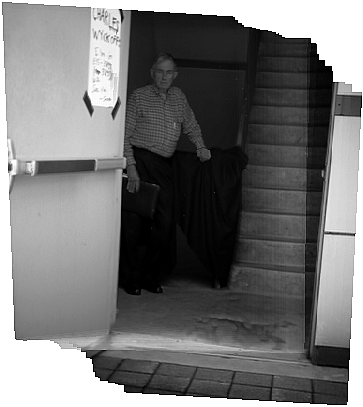
Notice how the sign on the door is very clear, and, at the same time,
we can see down into the dark corridor.
-
Joint parameter estimation in both domain and range of
functions in same orbit of projective-Wyckoff group
This paper pertains to creating high resolution radiance maps,
by combining differently exposed pictures of the same subject matter
in order to extend dynamic range. (Based on an earlier
1993 paper
published in IS&T.)
- A wearker result, for when the pictures differ ONLY IN EXPOSURE
(e.g. when all the pictures are taken from the same camera position
and orientation, as for example when the camera is mounted on a tripod
and a number of pictures are taken with different shutter speeds)
is described in the paper
Being Undigital...
-
A simple example of how the Wyckoff priniple can be applied to just
two images (that's the minimum number required).
- Here's another example of a Wyckoff set, consisting of
some pictures taken at the cyberman
opening at the Royal theatre.
You can view or download
the entire dataset from here.
--Steve Mann
I am a faculty member at University of Toronto;
you may want to visit my official faculty WWW page
at
http://www.eecg.toronto.edu/~mann
Contact info: Professor Steve Mann, University of Toronto, Department of
Electrical Engineering,
10 King's College Road, Toronto, Ontario, M5S 3G4
mann@eecg.toronto.edu.
© We're supposed to have a
Copyright notice
in our Web pages.
That circle-C is ASCII 251 in case you were wondering.
My Snail mail (Canada Post)
is also on that same page.
![[Free Speech Ribbon]](http://hi.eecg.toronto.edu/computing/rib_trn.gif) Blue ribbon designates
Free speech
(ribbon used instead of
setting background color to black
because this would be a Notscape specific feature).
Blue ribbon designates
Free speech
(ribbon used instead of
setting background color to black
because this would be a Notscape specific feature).
This page written for any browser, not
specific browsers.
It was tested with Mosaic (e.g. lean and mean, and COMPLIANT
to the HTML standards).





![[Free Speech Ribbon]](http://hi.eecg.toronto.edu/computing/rib_trn.gif)